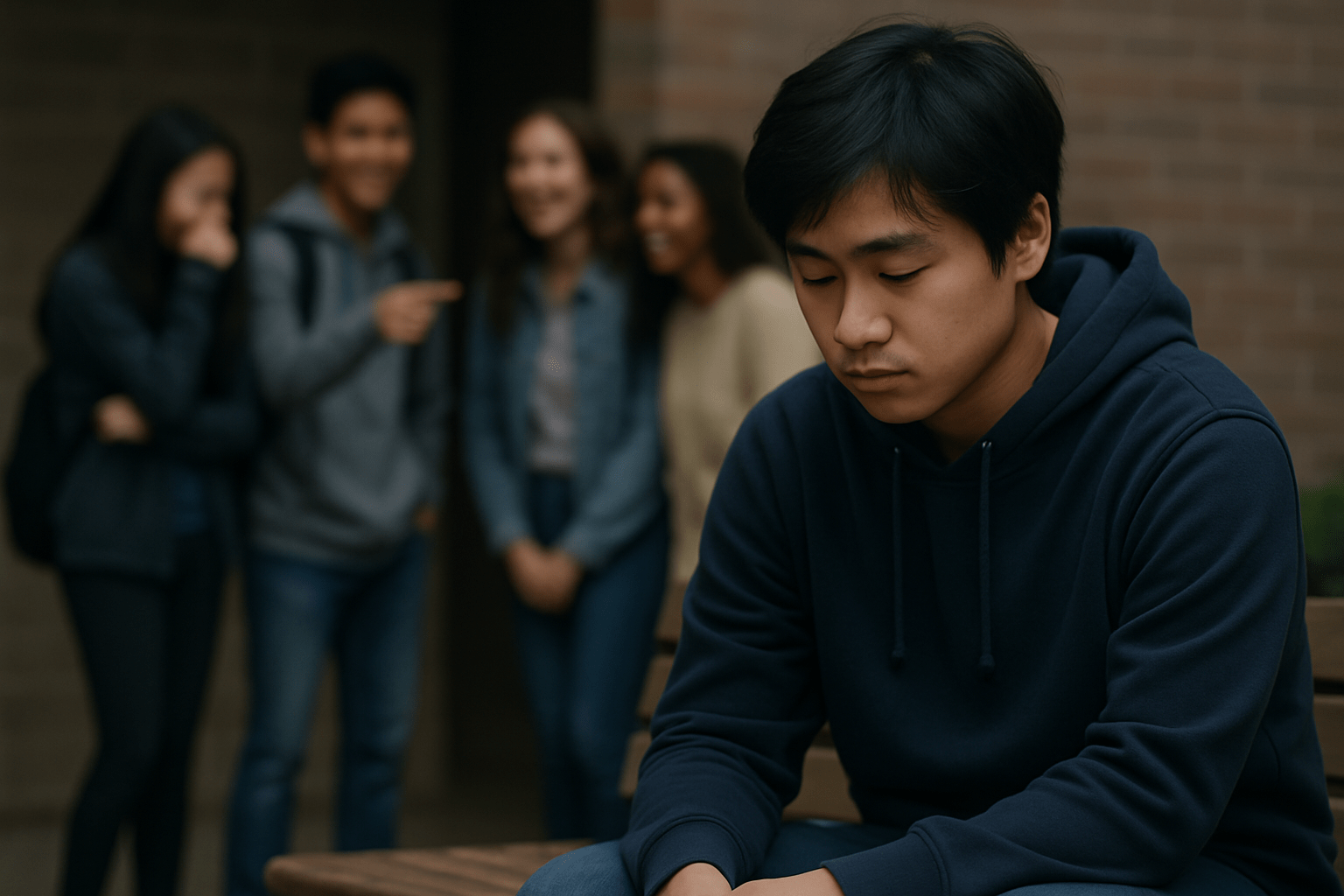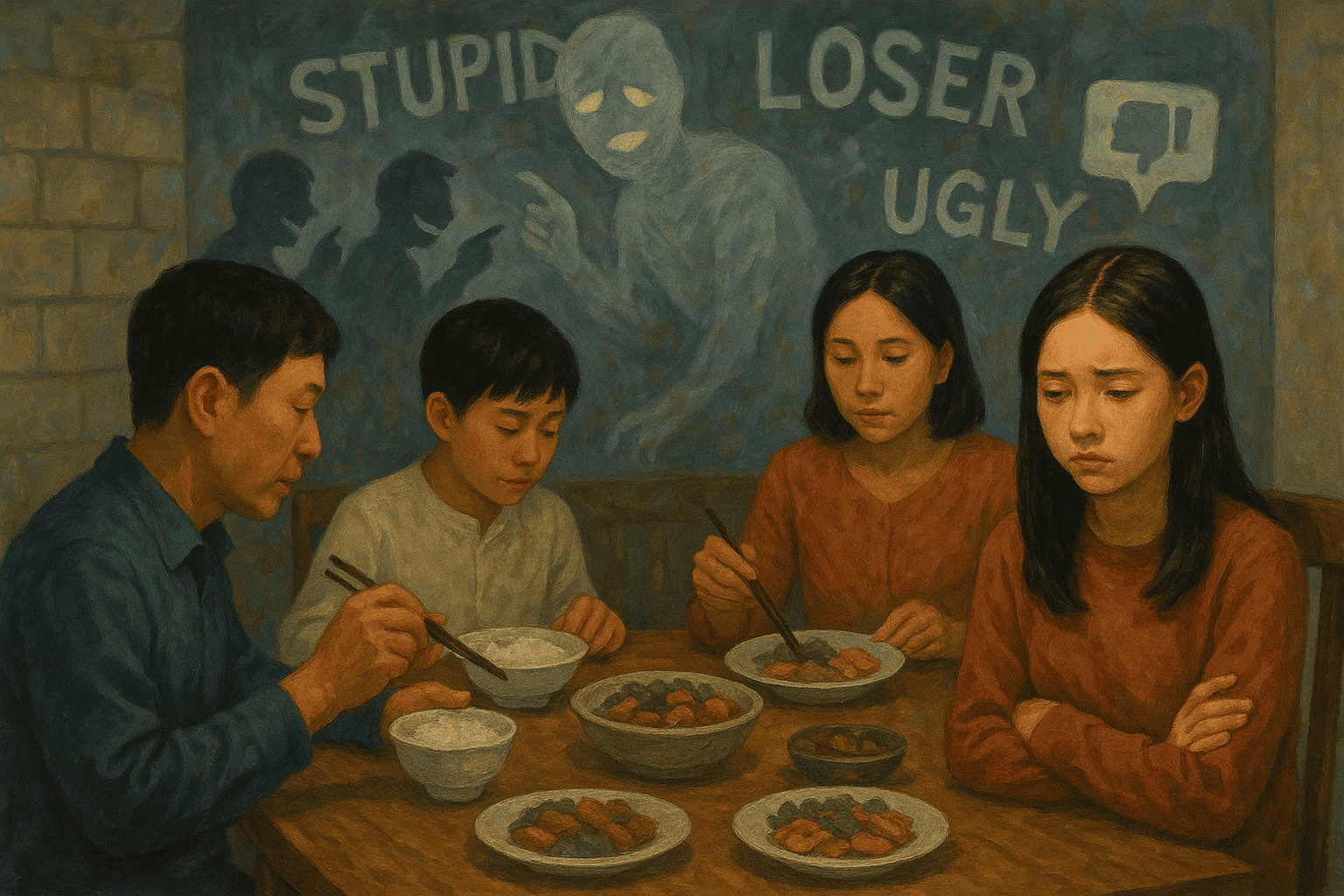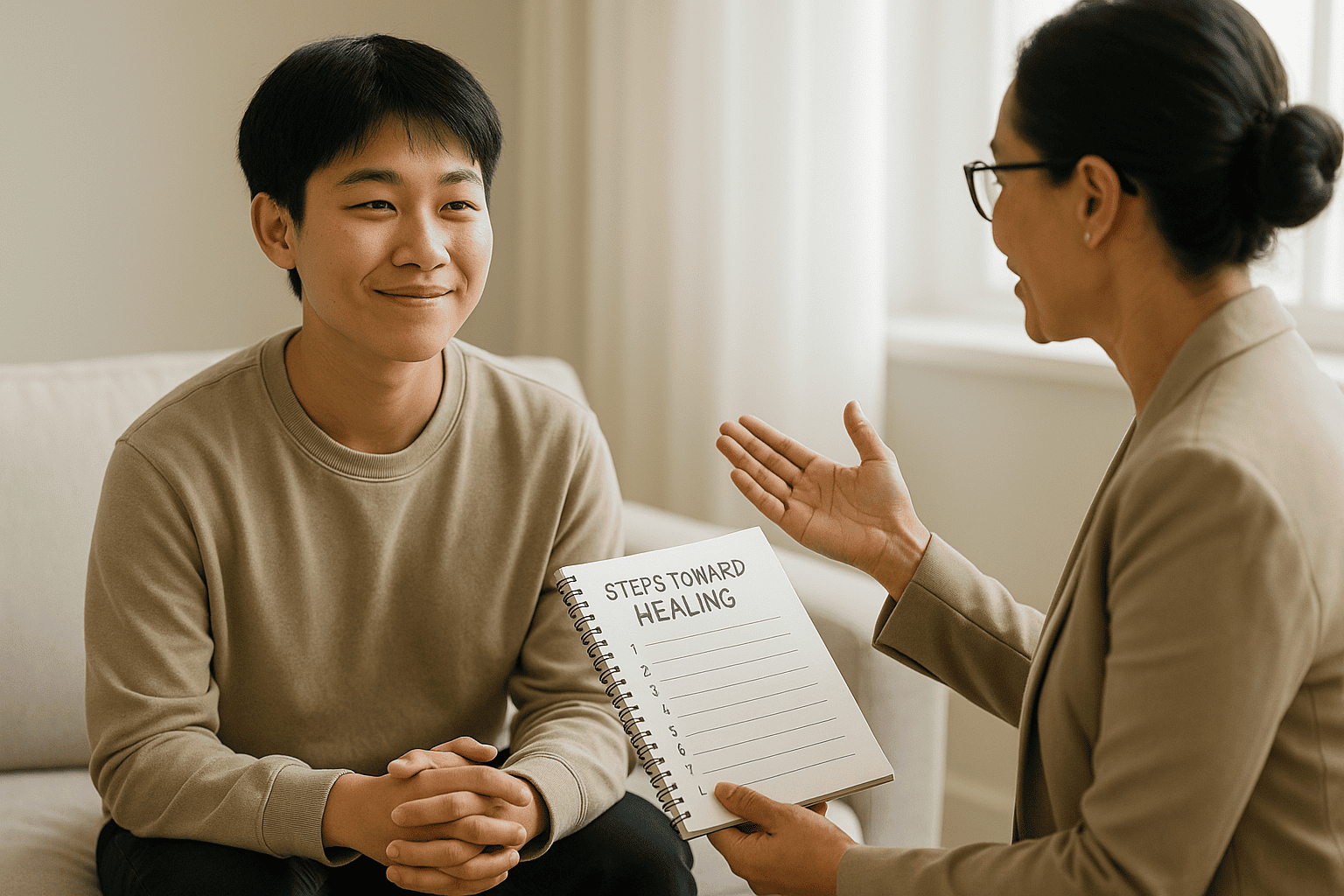A Therapist’s Guide to Understanding the Different Types of Bullying

In many of our communities, there’s a quiet pressure to endure hardships without complaint. We are often taught to be resilient, to not “lose face,” and to prioritize harmony above our individual struggles. While these values can build strength, they can also create a silence around painful experiences like bullying.
As a therapist, I want to create a safe space to talk about this issue, acknowledging that it is a deeply painful and real experience that no one should have to bear alone. Understanding the different types of bullying is a crucial first step toward healing and prevention.
The Overt Forms of Aggression We’re Taught to Endure
Often, when we think of bullying, we picture the most visible acts of aggression. These are frequently dismissed as “kids being kids,” but their impact is significant and can leave lasting emotional scars.
Physical Bullying:
This is the most direct form of intimidation. It includes any action that causes harm to your body or damages your belongings—things like being pushed in the hallway, having your lunch money stolen, or finding your books deliberately ruined.
In cultures that emphasize stoicism, the pressure to not show weakness can make it incredibly difficult to speak up about physical attacks. You might feel a sense of shame or believe you need to handle it on your own to avoid bringing dishonor to your family.
Verbal Bullying:
Words can carry immense weight, and verbal attacks are designed to chip away at your self-worth. This isn’t just simple name-calling; it can be cruel jokes about your accent, taunts about the food you bring for lunch, or insults directed at your family’s background.
This form of harmful behavior is particularly insidious because it often happens in moments when no authority figures are around, leaving you feeling isolated with the hurtful words echoing in your mind.
The Subtle Wounds That Are Harder to See
Beyond the obvious physical and verbal attacks are more covert forms of aggression that can be just as, if not more, damaging. These often play on social dynamics and the deep-seated human need to belong. It’s important to recognize these subtle types of bullying to fully grasp the scope of the issue.
Social or Relational Bullying:
This form of harm is about dismantling your social connections and sense of belonging. It’s the experience of being intentionally excluded from a study group, being the subject of malicious gossip that spreads through your community, or being given the silent treatment by people you thought were your friends.
For many in collectivistic cultures, where community and group harmony are paramount, this social exclusion can feel like a profound and devastating rejection.
Cyberbullying:
In our hyper-connected world, bullying has found a new, relentless platform. Cyberbullying uses technology—social media, messaging apps, online forums—to inflict harm.
This can look like posting embarrassing photos of you, creating fake profiles to spread rumors, or sending a flood of hateful messages. The anonymity of the internet can embolden perpetrators, and the 24/7 nature of online life means there is often no escape.

When Bullying Is Tied to Our Identity
Sometimes, bullying takes on a specific and deeply personal dimension, targeting the very essence of who you are. These forms of bullying are particularly damaging as they attack core aspects of your identity.
Racial Bullying:
This is aggression fueled by prejudice against your race, ethnicity, or cultural background. It’s hearing slurs about your heritage, being mocked for your physical features, or facing hostility because of the language your family speaks at home.
It can manifest as being told to “go back to your country” or having your cultural traditions treated as a joke. This specific form of harassment can make you feel like an outsider in your own environment.
Sexual Bullying:
This involves repeated, harmful, and unwanted behaviors of a sexual nature. It is not about romance or affection; it is about power and humiliation.
This can include spreading sexual rumors, making crude comments about your body, sharing private images without your consent, or making unwanted sexual advances.
Within many Asian cultures, where discussions about sexuality can be taboo, victims of sexual bullying often feel an immense sense of shame and fear, making it incredibly difficult to seek help.
The Path Toward Healing and Taking Action
The emotional toll of being bullied is immense. It can lead to anxiety, depression, a loss of confidence, and a deep sense of loneliness. You might start to believe the hurtful things being said about you or feel that something is wrong with you.
Please hear this: you are not the problem.
The behavior of the person causing harm is the problem. Acknowledging the pain across all types of bullying is the first step.

Your Voice Matters
If you are experiencing any of these harmful behaviors, or if you see it happening to someone else, you have the power to make a difference.
- Speak to a Trusted Adult:
Find someone you feel safe with—a parent, a relative, a teacher, or a school counselor. You do not have to carry this weight by yourself. Sharing your story is an act of courage, not weakness. - Document Everything:
Keep a record of what happened. Write down the dates, times, locations, and exactly what was said or done. If it’s happening online, take screenshots. This information is crucial when you report the behavior. - Create a Support System:
Connect with friends who make you feel good about yourself. If you are a parent, foster an open and non-judgmental environment where your child knows they can come to you with anything. - Begin Your Healing Journey With Us: You don’t have to navigate this alone. Here, we provide a confidential and culturally sensitive space where your experiences are validated. We can work together to process the trauma, rebuild the self-esteem that was unfairly taken from you, and develop powerful coping strategies.
Your story deserves to be heard with compassion and without judgment. If you are ready to take the next step toward healing, please reach out to schedule a consultation.
By understanding the different types of bullying, we can challenge the cultural silence that often surrounds this pain. Let’s work together to build communities where everyone feels seen, valued, and, most importantly, safe.